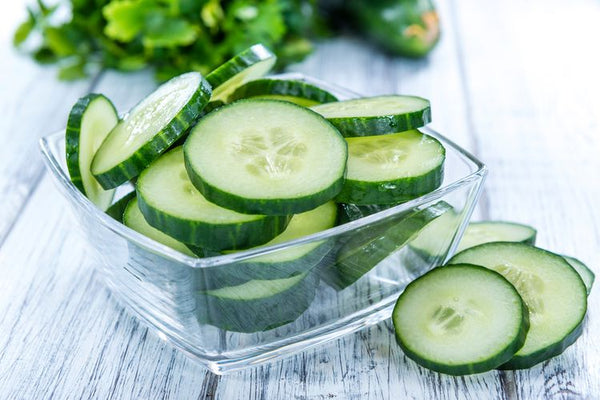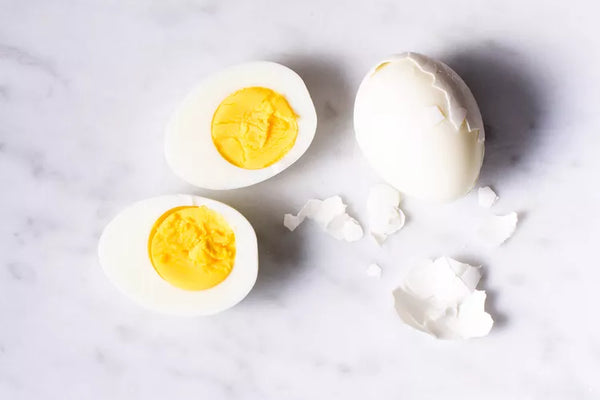
Fruit juices for kids: Allowed?

Fruit juice is often associated with health. At least many claim fruit juice is healthier than soda or sugar drinks. Is it Safe to Give Fruit Juice to Children?
The image of fruit on the label and the number "100%" or "added vitamin C" on the bottle are designed to send the message that fruit juice is something you should serve your child.
Read: 10 High Vitamin C Foods (More Than Oranges)
Most fruit juices are not exactly what they seem. Before pouring a glass for the kids, here's what you should know.
What are the Benefits of Fruit for Health?
Fruit is an excellent and important part of a healthy diet. Each fruit has a unique profile with nutritional benefits, and different vitamin and mineral content. Citrus fruits are high in vitamin C, apples are high in vitamin A, and bananas are high in potassium.
Most fruits are high in dietary fiber, which plays an important role in digestion.
Since fruits are naturally sweet, many people enjoy fruit-based snacks. On the one hand, many children don't like vegetable juices like tomato juice, but fruit drinks are always easy to serve on the go.
How Much Fruit Should Children Drink a Day?
Toddlers should consume about one cup of fruit a day, and children four years and older should consume up to 1 cup of fruit a day .
Encourage your child to like more fruit than a potentially unhealthy snack. Fruit will do more to support their bodies than French fries or potato chips.
It can be difficult to think about the serving of fruit in a cup when you have older children. You should cut the fruit into small pieces for toddlers, which will help it fit easily into the measuring cup.
Smaller fruits, such as blueberries, can be poured directly into the cup to measure an approximate serving size. What fruit should be introduced to children?
- Cranberry juice
- Pineapple juice
- cherry juice
- Grape juice
- Mango juice
- Watermelon slices
- beet juice
- kiwi juice
- Lime juice
- acai bowl
Many parents do not have time to measure the fruit before giving it to their children.
Read: Diligent Consumption of Vitamin C is Good at Reducing the Risk of Cataracts
A good rule of thumb is to assume one large fruit serving size is a cup of fresh fruit or one cup of fruit juice. For example, a medium-sized apple or orange is a standard serving of fruit.
What's the Difference Between Fruit Juice and Juice Drinks?
Many parents misunderstood here. Juice drinks or fruit drinks are often deliberately faked to look the same as fruit juice.
The company opted for a package designed to make this drink look luxurious and healthier, with a fruit image on the label. If you read the fine print and check the nutrition facts, you'll see that these things are "juice cocktails" or "contain X% juice."
This fruit drink is almost the same as a decaffeinated soda. They contain a lot of sugar and often a lot of artificial ingredients.
Like sugar and candy, these drinks add empty calories to your child's diet and can cause tooth decay.
These drinks are mixed and diluted with water and often contain added sugar. You should think of it as "junk food" and keep it off the table.
Unless the product specifies that it is 100% pure fruit juice, it is not 100% fruit juice. You should always check the ingredients list and nutrition facts before buying juice for your family to make sure that you are getting juice and not just processed fruit juice.
Real fruit juices will only contain natural sugars from the fruit. The color may be cloudy or less appetizing because of its nature. Pure apple juice will be a deep amber color, with the unfiltered varieties appearing an opaque gritty color through the bottle.
Natural grape juice will appear almost black because the grape's natural pigments are concentrated, and orange juice will be a bright yellow-orange color that is opaque and will sometimes look pulpy.
What Age Can Toddlers Start Drinking Juice?
While it's technically safe to start introducing juice to babies as young as six months old, most pediatricians advise against drinking it. Babies have a small stomach capacity, need a lot of calories and nutrients to grow and develop.
Juices will keep babies full without giving them the things they need from breast milk or formula.
The American Academy of Pediatrics does not recommend using juice, even if the label claims 100%, in small children's diets. While harmless, it is not at all as nutritionally beneficial as a whole fruit due to its calorie content.
- One year to three years -- About 4 ounces (half the recommended serving size) of fruit juice daily
- Four to five years -- 4 to 6 ounces of juice a day
Since the recommended serving sizes of fruit juices are very small, and the acidity of the juices can irritate small stomachs, most parents dilute the juice slightly with filtered water to fill a sippy cup and effectively make fruit-infused water.
If adding a little 100% juice makes your child more interested in drinking adequate amounts of water, that might be a good move.
Most pediatricians recommend drinks such as plain filtered water and low-fat milk (or unsweetened plant-based milk for children with intolerances or allergies).
Older kids can enjoy variety by including unsweetened coconut water, healthy fruit, green smoothies as a snack, unsweetened caffeine-free herbal teas, and naturally flavored sparkling water.
Why is a Whole Fruit and a Glass of Water Better?
Fruit juice contains water from within the fruit, infused with some natural flavors and several water-soluble vitamins and minerals. Unfiltered juice or juice with pulp will retain more of the real fruit, which is a true source of nutrition.
Juices like incomplete fruit. It does not contain all the fiber and nutrients and is not filling.
When you eat whole fruit, especially if the fruit is served raw, you are taking in every valuable nutrient that the fruit has to offer. It is better to get nutrition from whole fruit with a glass of water on the side.
This helps fruit to be a healthy snack or part of a regular meal rather than a regular drink. Your child can satisfy his hunger with something useful instead of drinking calories that do not provide optimal nutritional value.
This is especially true if something like whole fruit with peanut butter replaces a potentially unhealthy snack, like a sugar-laden granola bar or artificially flavored cheese puff.
That's the article Fruit juices for kids: Allowed? May be useful.




